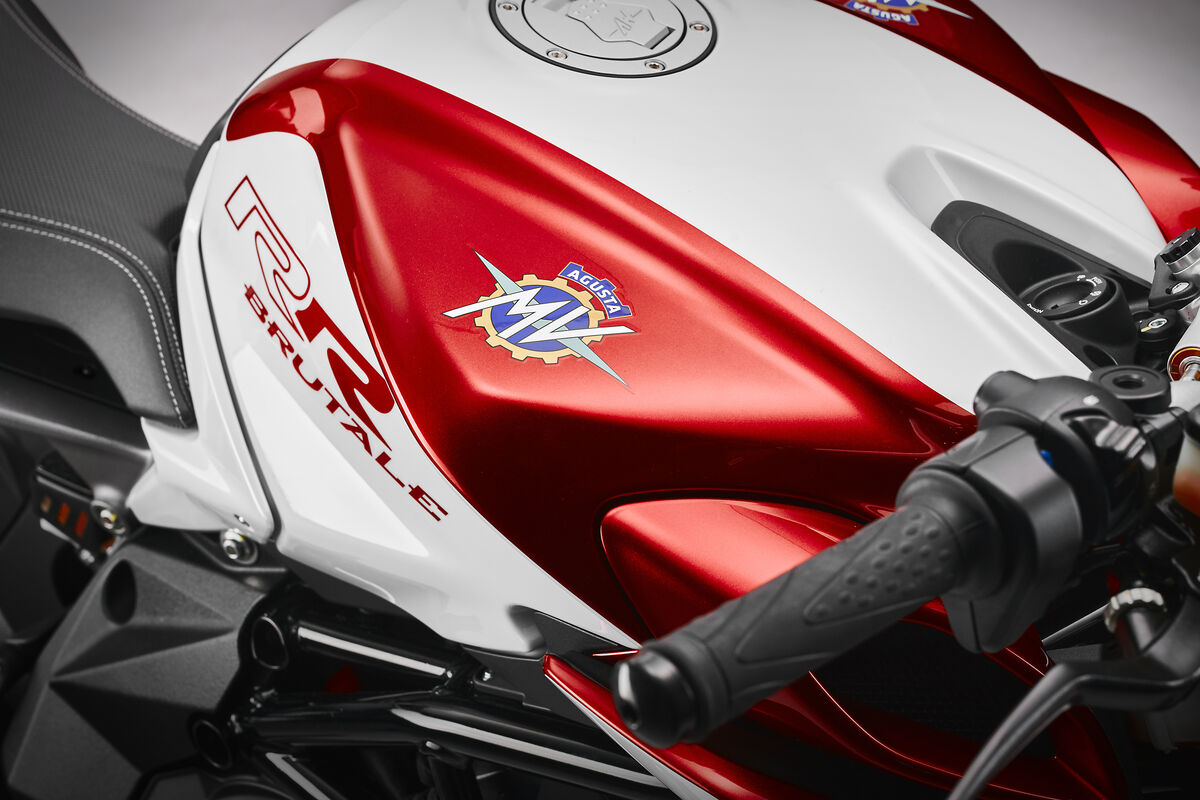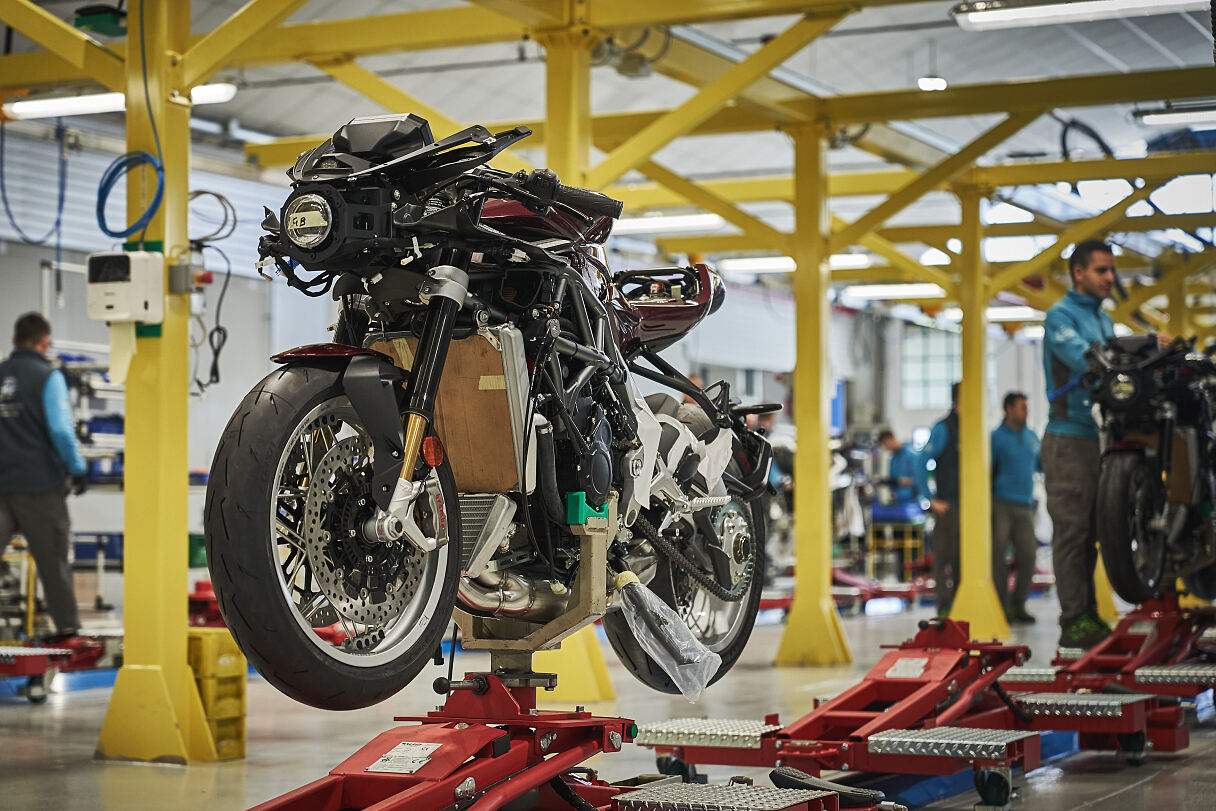Things are moving fast for MV Agusta, in the boardroom as well as on the road, with the Pierer Mobility group taking over the helm. It marks an exciting new chapter for the iconic Italian motorcycle brand, which made its first motorcycle during World War Two.
Agusta was already established as a real pioneer in the aviation industry. Count Giovanni Agusta had a passion for flying and founded his company in 1907. The Count died in 1927 but his family continued to build the company, with business booming in the fledgeling aircraft industry. However, with the war drawing to a close and the production of aircraft set to be banned in post-war Italy, Count Domenico Agusta made a business decision to diversify into motorcycles. With Italy needing cheap post-war transport and Agusta having its manufacturing facilities and skilled staff, it was to prove a smart idea. By the summer of 1943 MV Agusta had a prototype of its first motorcycle, a 98cc two-stroke single with a two-speed gearbox. This went into production and on sale after the war, with two versions of the 98 produced for the 1946 model year – the two-speed Economica and the three-speed Turismo (which also boasted rear suspension!).
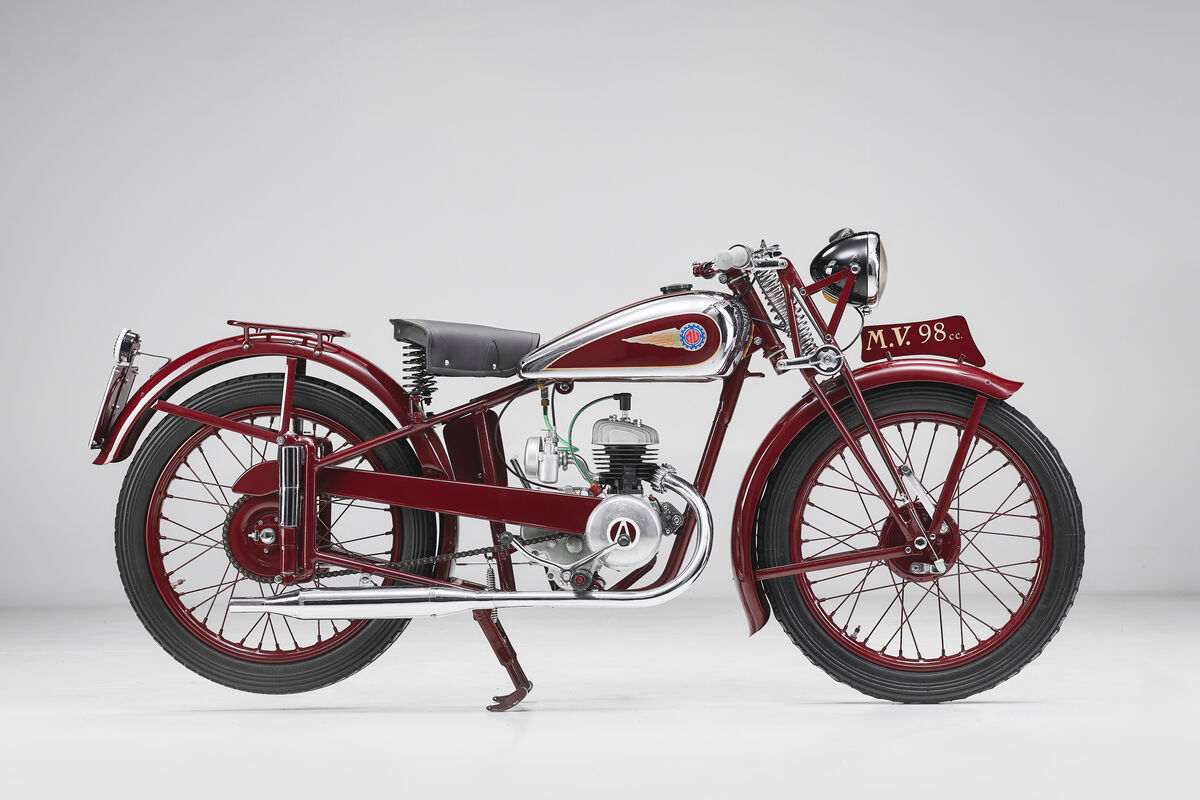
Count Agusta had a great passion for racing and, much like counterpart Enzo Ferrari in the car world, and profits from selling road bikes were generally channelled into the factory racing campaign.
MV Agusta were players in the very first motorcycling Grand Prix world championship in 1949. While British manufacturers focussed on the bigger 500cc and 350cc categories, the 250s and 125s were generally battled out by Italian bike makers. There were just three 125cc Grands Prix in that first year, all won by riders on Mondial machines, and Italian bikes and riders took all of the top 10 places in the championship. Carlo Ubbiali was MV’s top pilot, finishing fourth in the standings.
The big breakthrough came in 1952, when Britain’s Cecil Sandford won at the Isle of Man TT on his way to the 125cc championship, while Leslie Graham piloted MV’s four-cylinder 500 to two wins and second place in the premier class.
Indeed 1952 proved something of a watershed year for MV Agusta on and off the track. The company resumed production of aircraft, helicopters specifically, and this would prove a more lucrative business than selling motorcycles. Funded by the success of the helicopter business, Count Agusta was able to build the most technologically advanced race bikes of the time, while the road bike side of the business would start to move away from the more utilitarian machines like the 98 in favour of the exotic superbikes for which it is famous today.MV’s 500cc racers used four-cylinder four-stroke engines, similar in design to those of Gilera (thanks in no small part to the Count’s poaching of two key staff from his rivals – designer Piero Remor and mechanic Arturo Magni in 1950), and four-strokes were to become the company’s signature in the road bike world too.
Remor designed a 175cc four-stroke single for the road, which may seem quite humble today, but in 1950s Italy – where small two-strokes were the norm – it was considered a high end motorcycle. The 175s also enjoyed some success in production racing, but it was the factory team which built the brand’s global reputation.
Following Sandford’s 1952 success, Ubbiali rejoined from Mondial and won the 125cc title five times between 1955 and 1960, winning both the 125 and 250 crowns in 1956, 1959 and 1960. Britain’s John Surtees won both his and MV Agusta’s first 500cc world title in 1956, while ’58, ’59 and ’60 saw MV Agusta riders win all four solo categories (125, 250, 350 and 500) as they dominated the sport. Surtees won three 350 championships between 1957 and 1960, and was 500cc king in ’56, ’57, ’58 and ’60. The only blot came in 1957, when all the Italian manufacturers agreed to pull out of racing due to escalating costs. MV Agusta quickly reneged on the agreement – racing success being more important than financial prudence to the Count – leaving the door open for over a decade of dominance for the Varese factory.
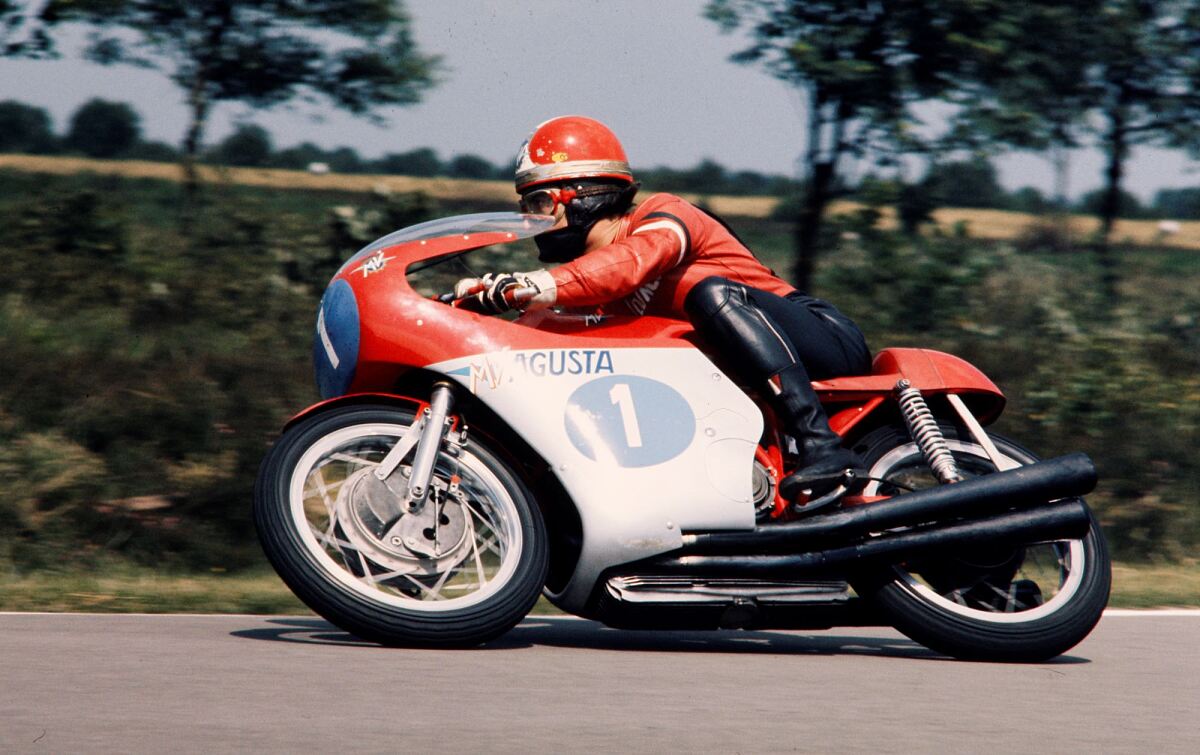
With the Italian rivals out and British manufacturers failing to develop their motorcycles at pace, MV Agusta won the 500cc Grand Prix world championship every year between 1958 and 1974. Honda was able to take wins and challenge the dominance in a two-year foray spanning 1966 and ’67, when they tempted Mike Hailwood (who was a four-time champ for MV between 1962 and ’65) to ride their RC181 factory racer, but otherwise it was domination never seen before or since. Hailwood’s seat was taken by Giacomo Agostini, who won 13 of his 15 world titles on MV machinery (six in the 350cc class and seven in 500s). Phil Read won two final 500cc titles, in 1973 and ’74.
But changes were afoot at MV Agusta and not for the better. Competition came in the form of Suzuki and Yamaha, who created a new generation of two-stroke machine which would outperform MV’s four-strokes and set the blueprint for Grand Prix racers for the rest of the century. Agostini, now riding for Yamaha, won the 1975 title from Read but returned to his spiritual home for one last hurrah in 1976. Fittingly Ago won MV Agusta’s last ever 500cc Grand Prix, around the notorious Nurburgring Nordschleife at the end of August. It was their 275th race win all in.
The death of Count Domenico Agusta in 1971 also contributed to the demise of the race programme and ultimately the original company itself. Without his passion and guidance, the team folded at the end of 1976, as the company faced bankruptcy.
By this time, MV Agusta’s road bike range was built around expensive low volume, high performance motorcycles built around the racing image, with MV Agusta being the first manufacturer to produce an inline four-cylinder road bike. Like many Italian manufacturers of the time, the 1970s ware a tough time for the company and by 1980 it looked like this once great name was consigned to history.
Castiglione revival
After almost two decades in the wilderness, MV Agusta was brought back to life in the 1990s by the Castiglione family – well known Italian industrialists whose Cagiva company had been mopping up classic brands including Ducati, Moto Morini and Husqvarna.
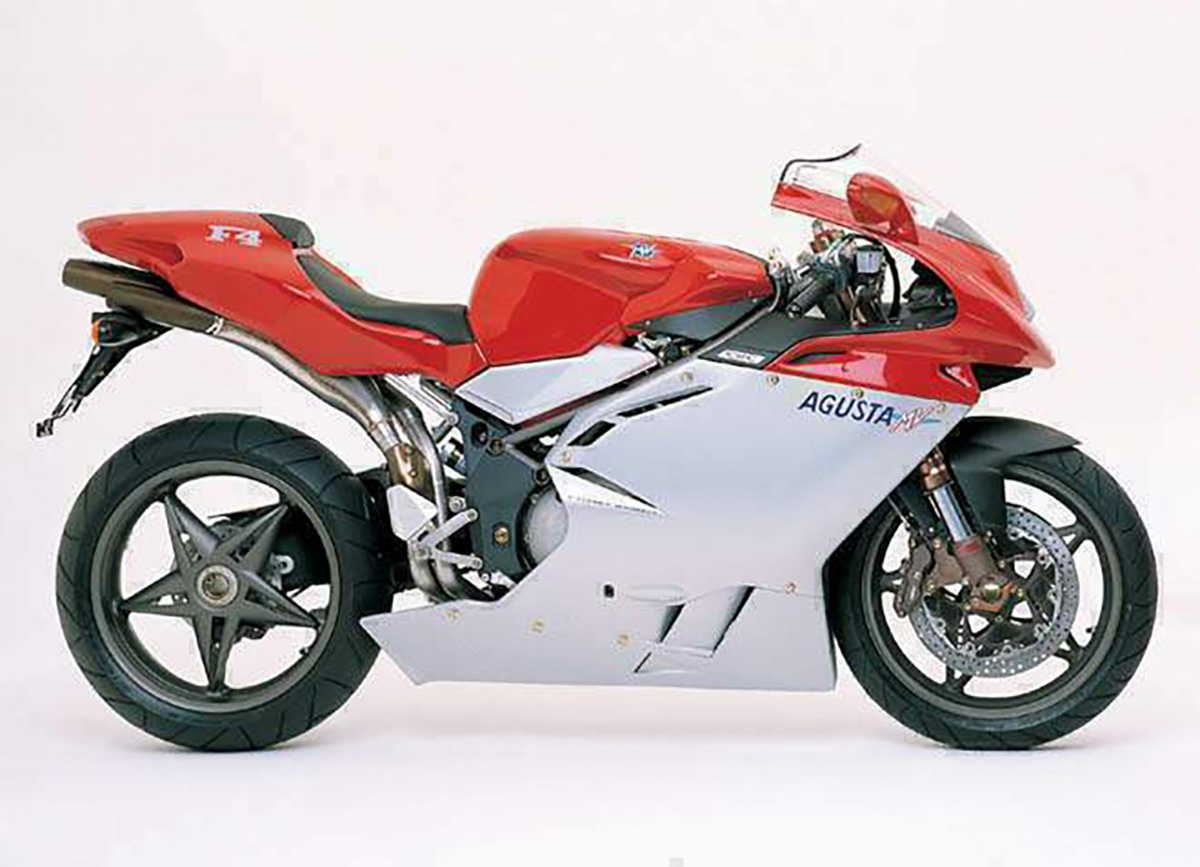
They acquired the MV Agusta brand in 1992 and unveiled their first model at the 1997 Milan motorcycle show. The F4 was a stunning 750cc inline four superbike, penned by Ducati 916 designer Massimo Tamburini. The F4 would be a stalwart of the modern MV Agusta range, evolving into a 1000cc superbike in 2005. Despite the racing heritage, the F4 was never really raced to a serious level – Ducati’s 916 being Castiglione’s weapon of choice in the Superbike World Championship – but the high spec, limited run models and correspondingly premium prices ensured it remained one of the most desirable motorcycles on sale. The F4 R 312 of 2008 was claimed to be the fastest production motorcycle of its time when launched, with the ‘312’ designation representing the top speed in kilometres per hour (194mph).
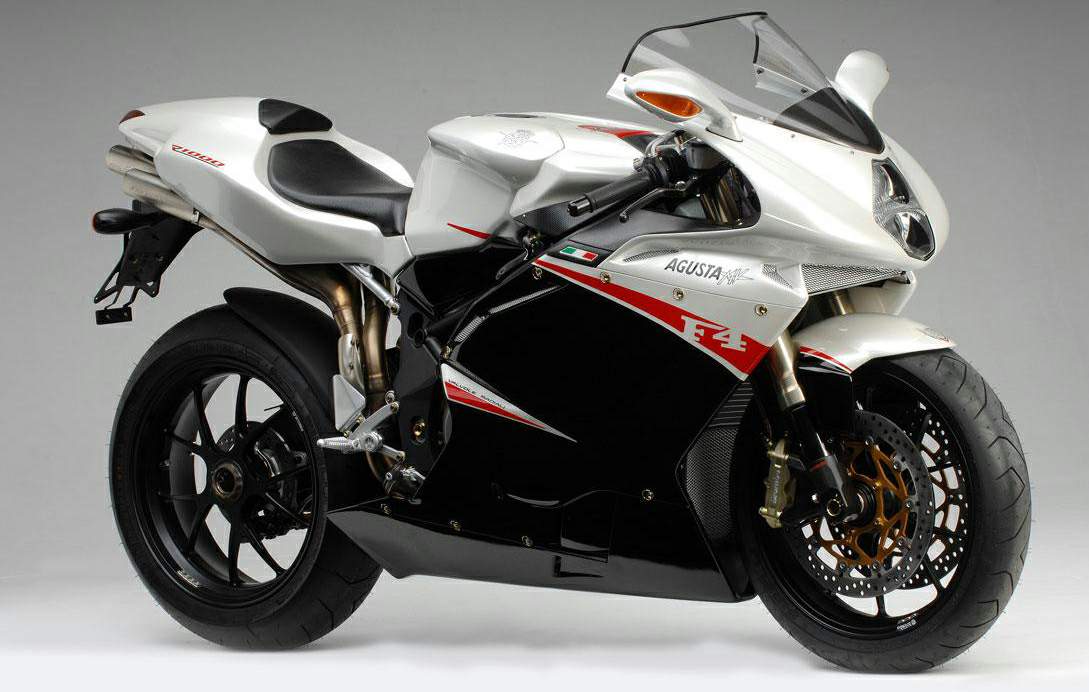
Despite producing some stunning motorcycles, the company remained unstable behind the scenes. Malaysian car giant Proton was a major shareholder for a period, before Harley-Davidson made a surprise acquisition in 2008 – only to exit a year later.
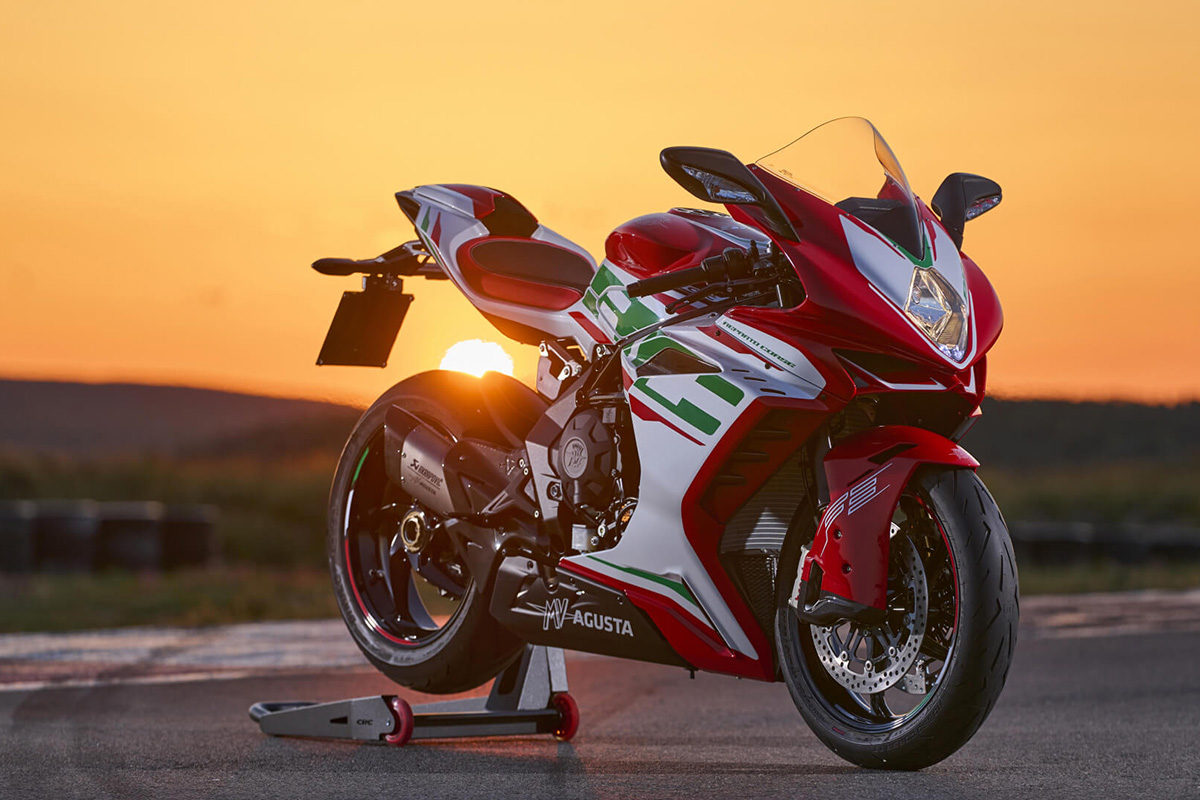
The Castiglione family bought back the brand, who now had a 675cc three-cylinder F3 platform alongside the F4 range. AMG-Mercedes invested and MV Agusta, now completely divested from any other motorcycle brands, went racing again – competing in the Superbike and Supersport World Championships with moderate success.
Despite promising sales, the company’s finances remained shaky. Russian investor Timur Sardarov became a major investor, taking on the role of CEO in 2018, before Pierer Mobility, the holding company behind the KTM and Husqvarna brands acquired a 25% share in November 2022. The deal saw MV, still using its own motorcycle designs, take advantage of Pierer’s purchasing, marketing and supply chain clout, and earlier this month Pierer Mobility announced it would be exercising its option to take on a majority shareholding. The Austrian company now holds 50.1% share in MV Agusta S.p.A. with KTM executive Hubert Trunkenpolz taking on the role of CEO, while Sardarov remains as Vice President.
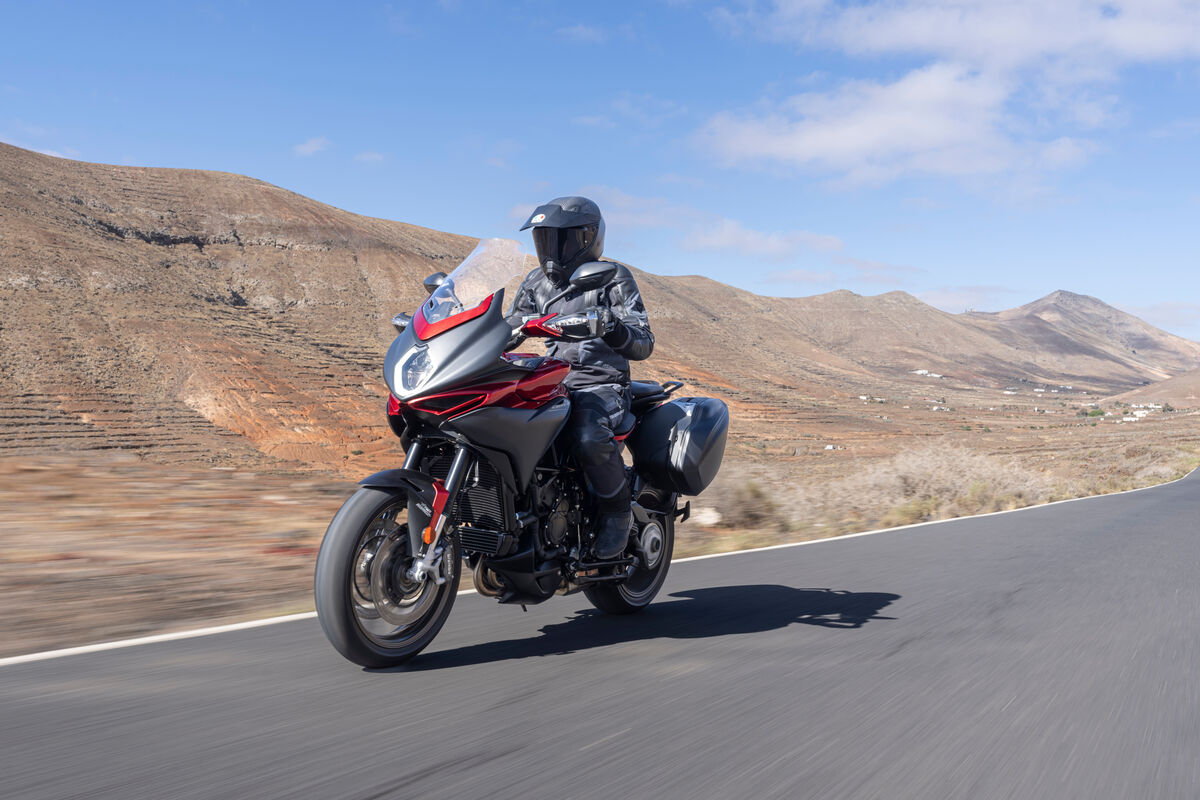
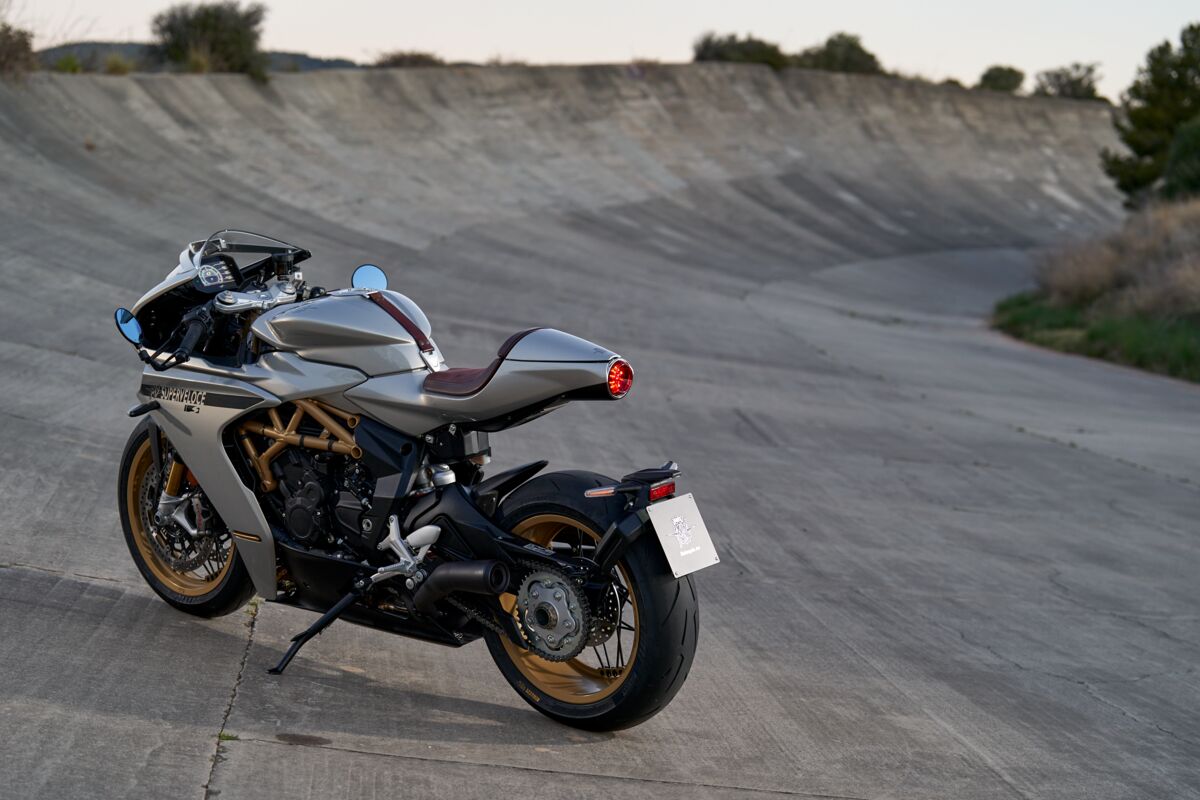
While it is unclear if MV Agusta will follow the same badge engineering approach used by other Pierer brands (KTM, Husqvarna, GASGAS and CFMOTO all use the same engines) it certainly looks like the start of a positive chapter for this iconic Italian motorbike brand. The range, although still high end, no longer just features sportsbikes, with the Turismo Veloce adventure tourer and the retro Superveloce being right on trend in today’s motorcycle landscape.
With new investment and access to the might of Europe’s largest motorcycle manufacturer’s resources, we can’t wait to see what the future brings.
